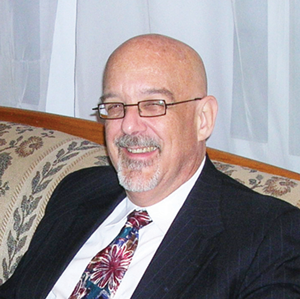I am pleased to report that after three rounds of negotiations, starting in October 2015, the Federation reached agreement with representatives of public television employers including the Public Broadcasting Service, WGBH, WETA, WTTW, Austin City Limits, Sesame Workshop, and Thirteen Productions (formerly Educational Broadcasting Corporation) for a successor National Public Television Agreement. The agreement was ratified June 1, and will extend three years.
In the last decade, employers in all quarters of the commercial television industry fought to deny fair compensation to musicians, to expand their own rights, and to deny union jurisdiction (and thus the path to negotiating fair deals) over products made for new media platforms. Unfortunately, in past union administrations, television employer intransigence was never met with a firm union resolve to fight through to reasonable conclusions. As a result, this administration inherited a tangle of television agreements that were expired and/or enmeshed in years-long and seemingly endless negotiations.
It has taken time to put our television house in order, but we have done so. We took on the tough negotiations, fought nose-to-nose when necessary, and showed the various employer groups an unflagging commitment to asserting our rights and obtaining fair deals.
Using an approach that has been both militant and deliberate, we worked through the AFM’s outstanding television agreements and concluded deals—including successors to the TV Videotape Agreement, the Country Music Television Agreement, and the Basic Television Film Agreement—that benefited musicians and put the Federation on a firm footing for future negotiations.
Our determined resolution of the commercial television agreements formed the background for the recent successful negotiation of the National Public Television Agreement. That agreement had expired, and was left to languish in 2005 under my predecessor. The employers were perfectly content to let it languish forever. In frank terms, they had no interest in reaching a new agreement; it suited them to simply extend the 2002-2005 agreement perpetually with no increases.
That is a recipe for disaster, and having reached progressive agreements with the commercial television employer groups, we went on to confront public television. We insisted not only that the holding pattern must end, but that musicians must see real economic gains in a new agreement.
The resolve of our negotiating team and this administration’s willingness to take on the tough negotiations with media employers enabled us to accomplish our goals and deliver a good deal—including an immediate 8% wage increase, an additional 3% wage increase in the second year, another 3% wage increase in the third year, increased health & welfare contributions, increased pension contributions, increased cartage payments, provisions governing new media, and a groundbreaking clip use agreement.
The Federation firmly adheres to the principle that musicians deserve reasonable payment when clips of music they performed on one television program are used in a different television program, or in other media. However, the lack of established rates for clip use often has made the collection of clip payments difficult and ad hoc; and the distribution of clip use payments to musicians who performed on older programs, where documentation is sometimes lacking, can pose its own difficulties.
The new agreement firmly establishes, in explicit terms, the obligation to make clip use payments when a clip from a program produced under the National Public Television Program is licensed into any other program, and, in addition, when a clip from a program produced pursuant to another AFM agreement is licensed into a National Television Agreement program.
This new agreement will, for the first time, require signatory public television employers to share with musicians the revenue they receive from certain forms of new media exploitations. Specifically, they will be required to share the covered exploitation revenues with musicians at the same rates as commercial television producers under the TV Videotape Agreement.
Although the rates are the same as the commercial television rates, we believe that the payment provisions in this agreement are more favorable, because they place the payroll costs of these exploitation payments (such as the employer’s share of social security contributions) squarely on the employers, instead of deducting them from the exploitation payments themselves.
In sum, the Federation has put the same foot in the door with public television that it, and the other guilds, put in the door in the commercial television world (and that SAG-
AFTRA has negotiated in its public television agreement). New media issues will continue to occupy the attention of all the guilds, and the Federation, in future bargaining.
I offer my heartfelt thanks to our negotiating team and staff who worked hard and with great dedication to obtain such favorable results. The negotiating team included AFM International Vice President Bruce Fife and representatives from the following locals: Local 802—President and Executive Officer Tino Gagliardi, Vice President Andrew Schwartz, Electronic Media Services Supervisor Steven Danenberg, and Administrative Assistant John Painting; Local 47—President John Acosta, Vice President Rick Baptist, and Electronic Media Division Administrator Gordon Grayson; Local 257—President and Executive Officer Dave Pomeroy; Local 10-208—Electronic Media Representative Dean Rolando; Local 9-535—President Pat Hollenbeck; Local 161-710—President Ed Malaga. AFM staff on the negotiating team were: Electronic Media Services Division Director Patrick Varriale and Director Electronic Symphonic Services Division Deborah Newmark. Special thanks to Counsel Trish Polach of Bredhoff & Kaiser for her tireless efforts in these negotiations.




















